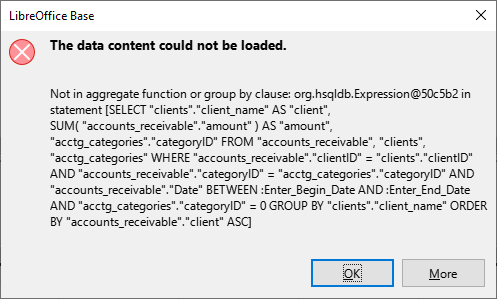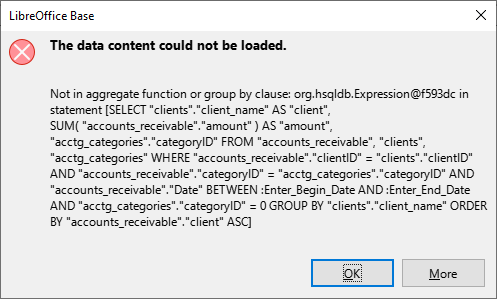I don’t understand AVG – isn’t that average? I didn’t ask it to average anything out. Basically what I need is what I put in the GUI.
Group by client name and SUM so multiple entries for that client shows up in the Query as 1 row.
ie: client1 $50
client 1 $100
client 1 $150
returns in the query as
client 1 $300
then the next line shows
client 2 $700
and the next line shows
client 3 $120
and so on.
But I need the Income category to be just categoryID “0” (ie: job income). And THAT’S what seems to be throwing everything out of whack.
Because I have client 4 with categoryID “2” showing a different type of income (ie: rental income) at $50. I don’t want that on the same report because it’s not Job income.
So I need a QUERY that returns and SUMS each client with the “categoryID” of “0” for a date range.
Apparently, via the GUI of the QUERY DESIGNER, I can get only one or the other…not both. I get the aforementioned error when I try both.
I hopefully am missing something. Because this tool is a great tool.
Maybe I should try to write 2 queries…one that does the Group and SUM for me, then build another query using the first query to filter out the categoryID? Can that be done?
If you look at the sample db, you’ll see two queries in there…the “old” is functional. The “beta” is what I’m trying to replace it with so I can build different reports to each query.




